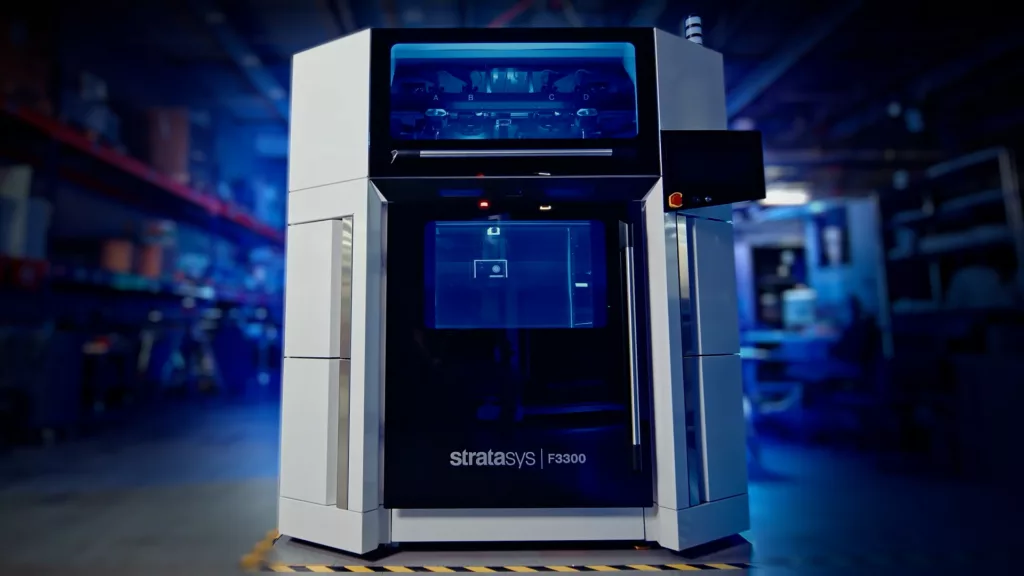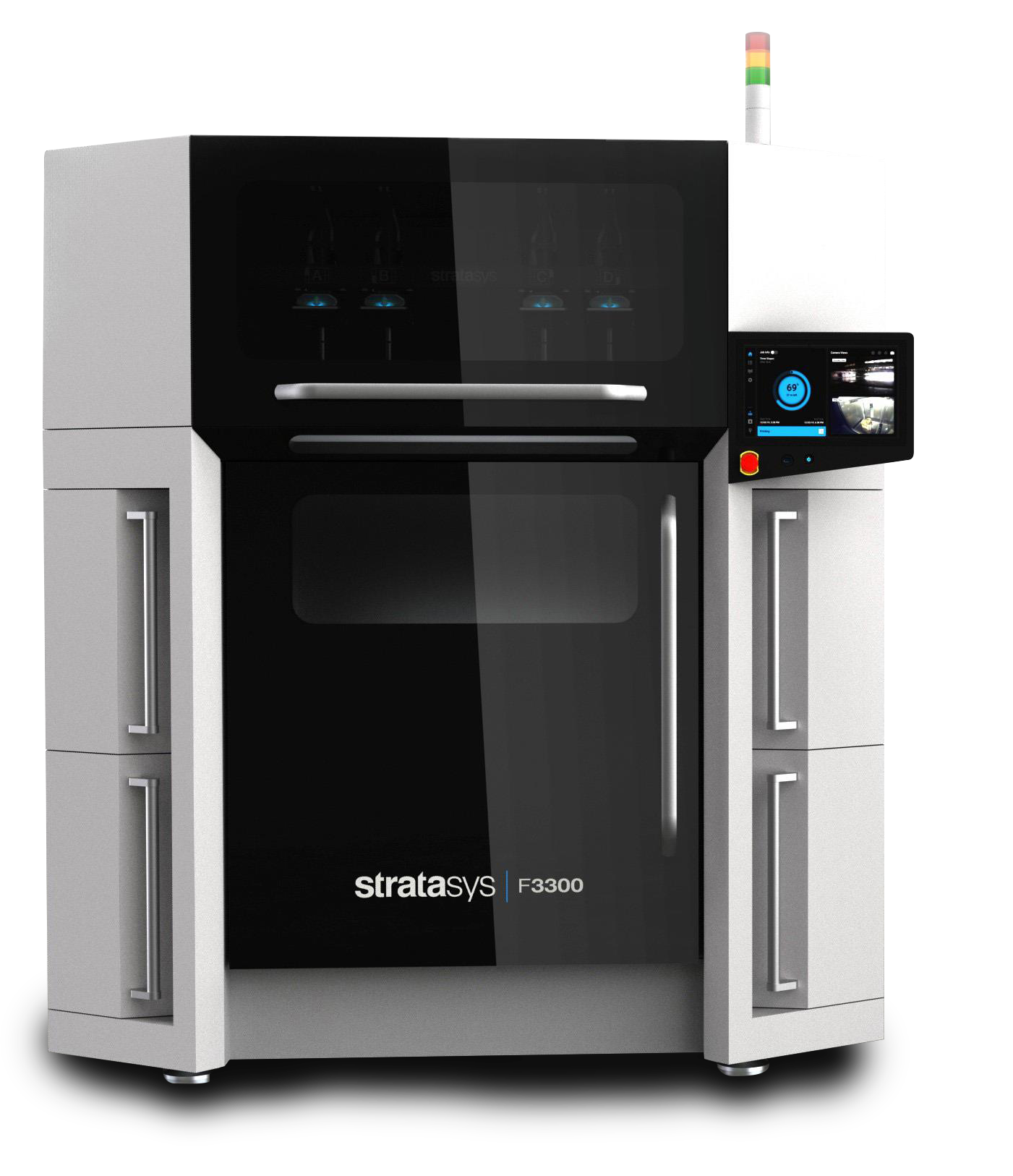The new standard in industrial FDM® technology
The Stratasys F3300 FDM 3D printer sets a new standard in industrial 3D printing with its exceptional speed, accuracy, efficiency, ease of use, and cost-effectiveness. This ground-breaking printer is designed to meet the demands of even the most challenging applications, offering a seamless and reliable printing experience.
5 key features of the Stratasys F3300
Speed
The F3300 can print up to twice as fast as legacy FDM printers, thanks to its new gantry design and faster extrusion rates. This means that manufacturers can produce more parts in less time, without sacrificing quality.
Accuracy and repeatability
Maximized uptime
The F3300 introduces a number of design features that minimize downtime, such as etherCAT onboard system monitoring and communication, redundant extruder system, system health monitoring, and integrated material dryers. This means that manufacturers can spend less time dealing with printer problems and more time producing parts.
Ease of use
With a range of innovative new attributes including intuitive user interface screen, autocalibration, front-mounted extruders, simple material loading, and workflow-enhancing CAD-to-print software, the F3300 is accessible and user-friendly, even for those with limited additive manufacturing experience.
Cost-effective
The F3300 uses larger material spools and a simpler spool design, which reduces their manufacturing cost, particularly for high-performance materials. It also incorporates features like autocalibration to reduces the labour required to operate the printer, leading to significant cost savings.



